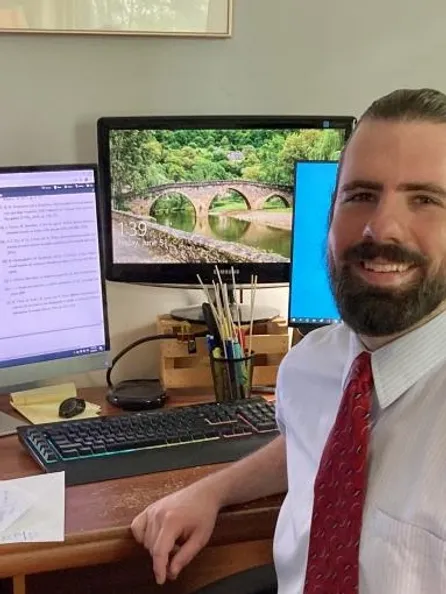Prof Stefan Schonsheck
In the summer of 2020, Stefan joined UC Davis and the TETRAPODS Institute of Data Science, working under Prof. Naoki Saito. and the UC Davis math department as a Krener Assistant Professor. He teaches classes in applied math, specifically: numerical analysis, differential equations, optimization, and signal processing. Previously, he obtained a Ph.D. in the Applied Mathematics Department at Rensselaer Polytechnic Institute, working under Prof. Rongjie Lai. At RPI, he was secretary of our SIAM chapter, spent a semester at UCLA attending the IPAM long program “Geometry and Learning from Data in 3D and Beyond” and worked with researchers at IBM through the Rensselaer-IBM Artificial Intelligence Research Collaboration. He completed my thesis, “Computational Analysis of Deformable Manifolds: from Geometric Modeling to Deep Learning” in the spring of 2020, and won the Bill and Nancy Siegmann Applied Mathematical Modeling Prize. He studies computational differential geometry focusing on PDEs and optimization problems involving manifolds. Specifically, he is interested in applications in shape processing, signal analysis, and machine learning in non-Euclidean domains. He also has strong interests in harmonic analysis and generative processes for both Euclidean and non-Euclidean data.
Project
The Laplacian operator is a ubiquitous tool in signal processing. Generalizations of this operator to manifolds (i.e., the Laplace-Beltrami operator) and graphs (i.e., the graph Laplacian) have proved to be very useful for learning on non-euclidean domains. Helmholtz-Hodge theory can further generalize these operators to higher-order differential forms. For example, the continuous 1-Laplacian can be used to analyze vector-fields on manifolds [1] and edge flows on directed or undirected graphs can be analyzed via wavelet-like bases generated by the Hodge-Laplacian [3]. Similarly, the dth-Laplacian can be used to define convolutional operations on d-degree complexes [2]. This project will use these operators to develop methods for solving signal processing problems such as denoising and in-painting on simplicial domains focussing on edge-based and face-based signals. We do so using both traditional variational methods and neural network-based approaches.
References [1] Y.-C. Chen, M. Meila and I. G. Kevrekidis, Helmholtzian eigenmap: Topological feature discovery and edge flow learning from point cloud data, arXiv preprint arXiv:2103.07626, (2021). [2] S. Ebli, M. Defferrard, and G. Spreemann, Simplicial neural networks, arXiv preprint arXiv:2010.03633, (2020). [3] T. M. Roddenberry, F. Frantzen, M. T. Schaub, and S. Segarra, Hodgelets: Localized spectral representations of flows on simplicial complexes, arXiv preprint arXiv:2109.08728, (2021).
